Shea butter works great as a soap base due to its natural moisturizing and anti-inflammatory properties.
This cold-process shea butter soap recipe will make several soap bars ready to use in as little as five weeks. It’s well worth the wait!
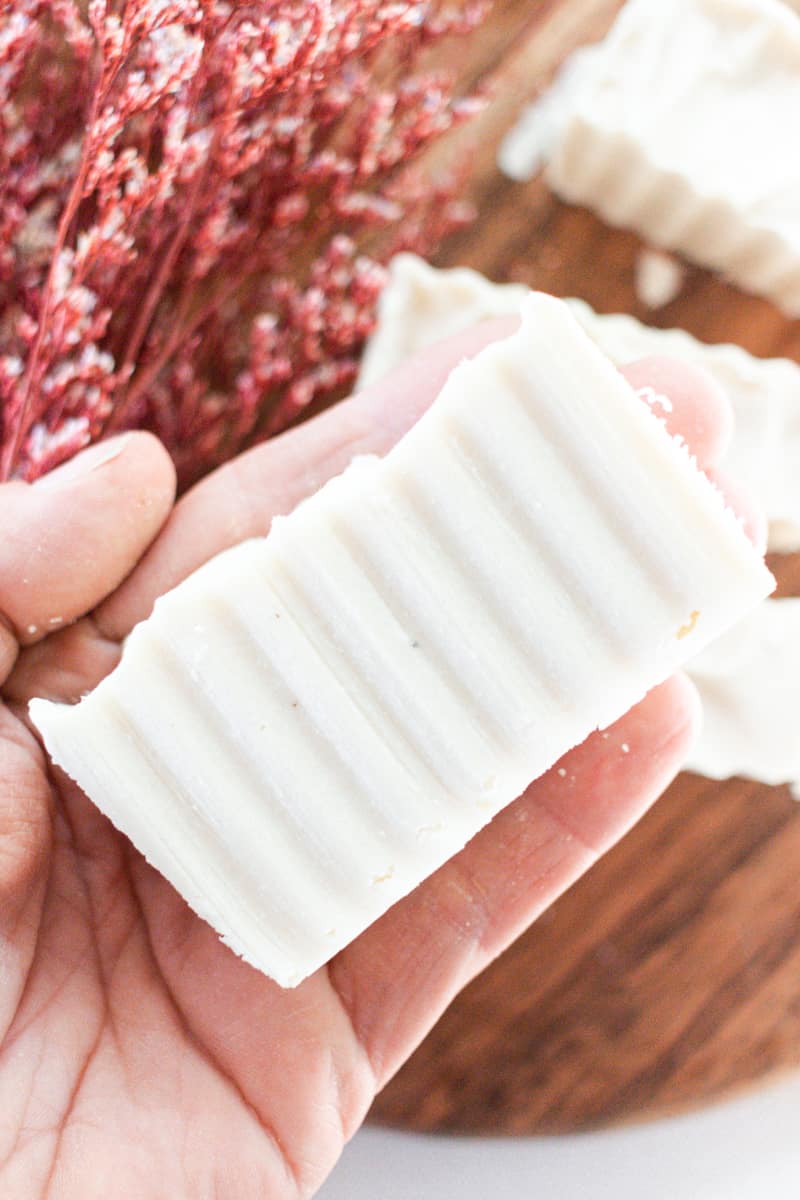
Something in me always looks at soap and thinks, “Is this one actually going to moisturize my skin?”
Like, really moisturize.
I mean, many soaps on store shelves don’t add moisture; let’s be honest.
Most soaps are a cleansing item – designed to clean the skin – which is, of course, what we are after!
But, In addition to cleaning and cleansing, they can strip off some of the natural oils in the skin (I’m talkin’ to you, hands!)
So thank goodness I discovered this shea butter soap recipe. It’s one of only a handful of soaps I’ve ever used that doesn’t dry my hands to flaky stumps.
In fact, this comes as a follow-up to my moisturizing soap bar because of several requests for a shea butter soap. I also included a touch of fractionated coconut oil because of its moisturizing properties.
I’ll share the recipe with you below in this post, but first off, I’ll explain why shea butter is so great in soap, along with its benefits for the whole body.

What is homemade shea butter soap?
A shea butter soap DIY, made at home, is a beautiful thing. It uses shea butter as its core ingredient to moisturize the skin and cleanse at the same time.
The great thing about any DIY soap is that you control whatever ingredients go in.
You can avoid all unwanted ingredients and harmful chemicals that get put into mass-manufactured soaps and rely solely on natural ingredients, which are far better for your health.
But why use shea butter in soap?
Simply put, it is a luxurious soap ingredient that results in a highly moisturizing soap bar that feels amazing when you use it on your skin.
Think silky smooth rather than the standard dry soap feeling you may be used to.
This recipe combines a large portion of shea butter with fractionated coconut oil while being lightly scented with orange essential oil.
It’s a beautiful soap that the whole family will love using, for sure!
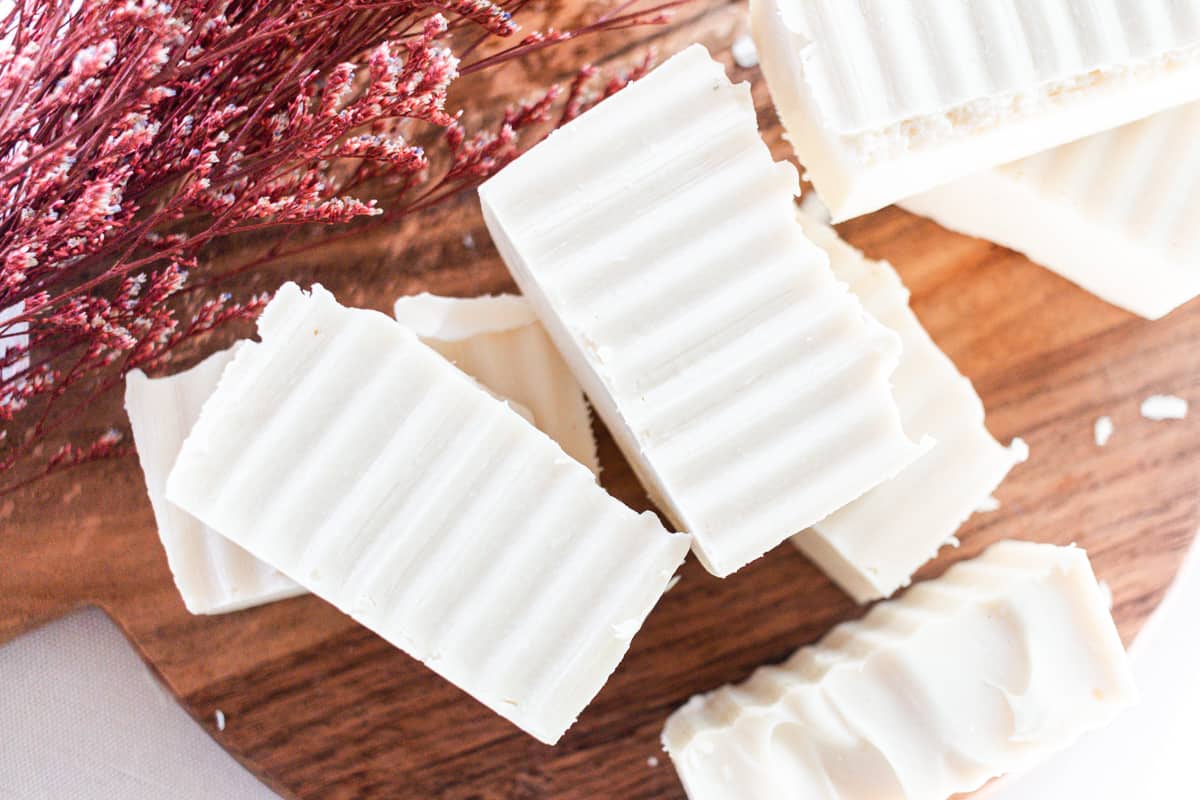
A little on the ingredients
Shea butter – is highly moisturizing, with anti-aging and anti-inflammatory properties. It’s great to use on sensitive skin and, as a result, can be found as an ingredient in many of my cold process soap bar recipes and herbal soap recipes.
Fractioned coconut oil – is an anti-microbial and anti-inflammatory ingredient that works nicely alongside shea butter to add ‘fluidity’ to a soap, meaning it feels silkier on the skin when applied.
Orange essential oil – is a wonderfully relaxing scent that calms the nervous system, reducing stress and elevating happiness levels. Bring on summer, we say!
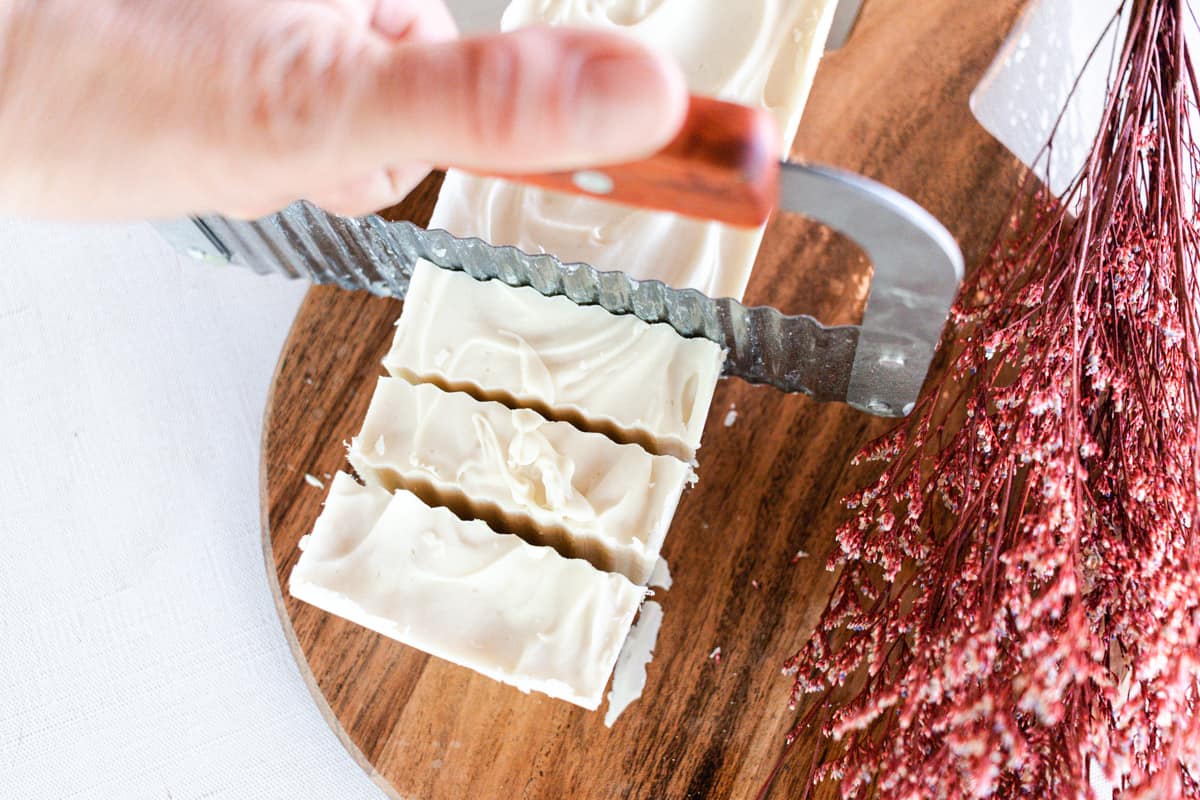
This post contains affiliate links, which means I make a small commission at no extra cost to you. Get my full disclosure HERE.
How to make shea butter soap
Follow these instructions carefully; the ingredients must be exact for any soap recipe to work correctly.
It’s also important to practice safety procedures when working around lye. Lye will burn the skin, eyes and should not be inhaled. Wearing safety goggles, gloves, a mask, and sleeves and working alone in a well-ventilated area is a must.
Ingredients:
- Shea butter 12 oz
- Fractionated coconut oil 4 oz
- Total Fats & Oils: 16 oz
- Water 5.34 oz
- Lye 2.39 oz
- Total Lye & Liquid 7.74 oz
Fragrance
Orange essential oil 25 drops
Instructions
1. Working in a well-ventilated area and wearing proper safety gear, add the water to a jar or container that can handle high heat.
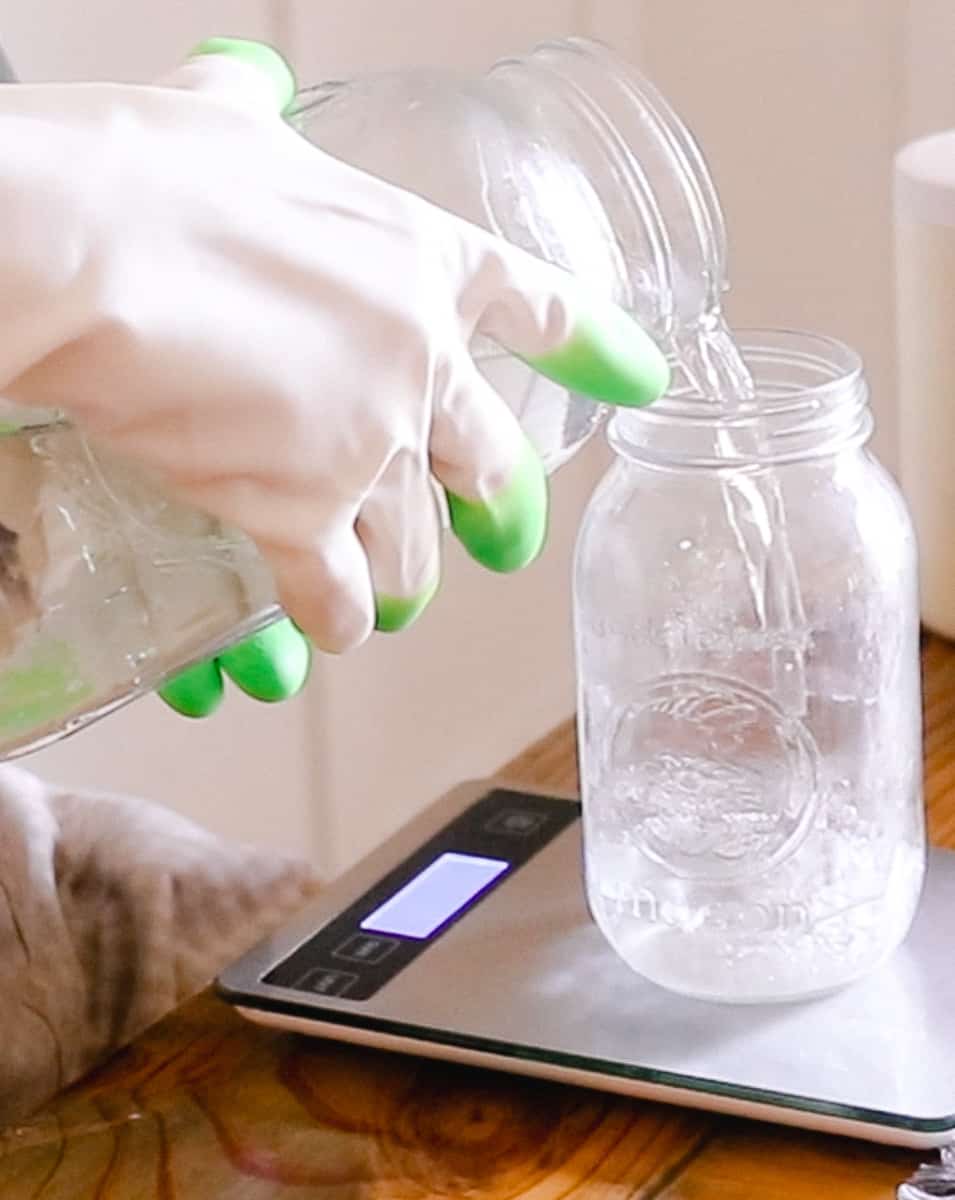
2. Carefully and slowly add the lye to the water, then gently stir it until dissolved. Note the liquid will shoot up over 200°, so using a container that can handle the rapid increase in temperature is vital!
3. Set the lye water aside to cool while you do the next step.
4. Melt the shea butter and fractionated coconut oil in a small saucepan over medium-low heat. You can also use a double boiler. However, I’ve found it works just as well using a saucepan while stirring frequently.
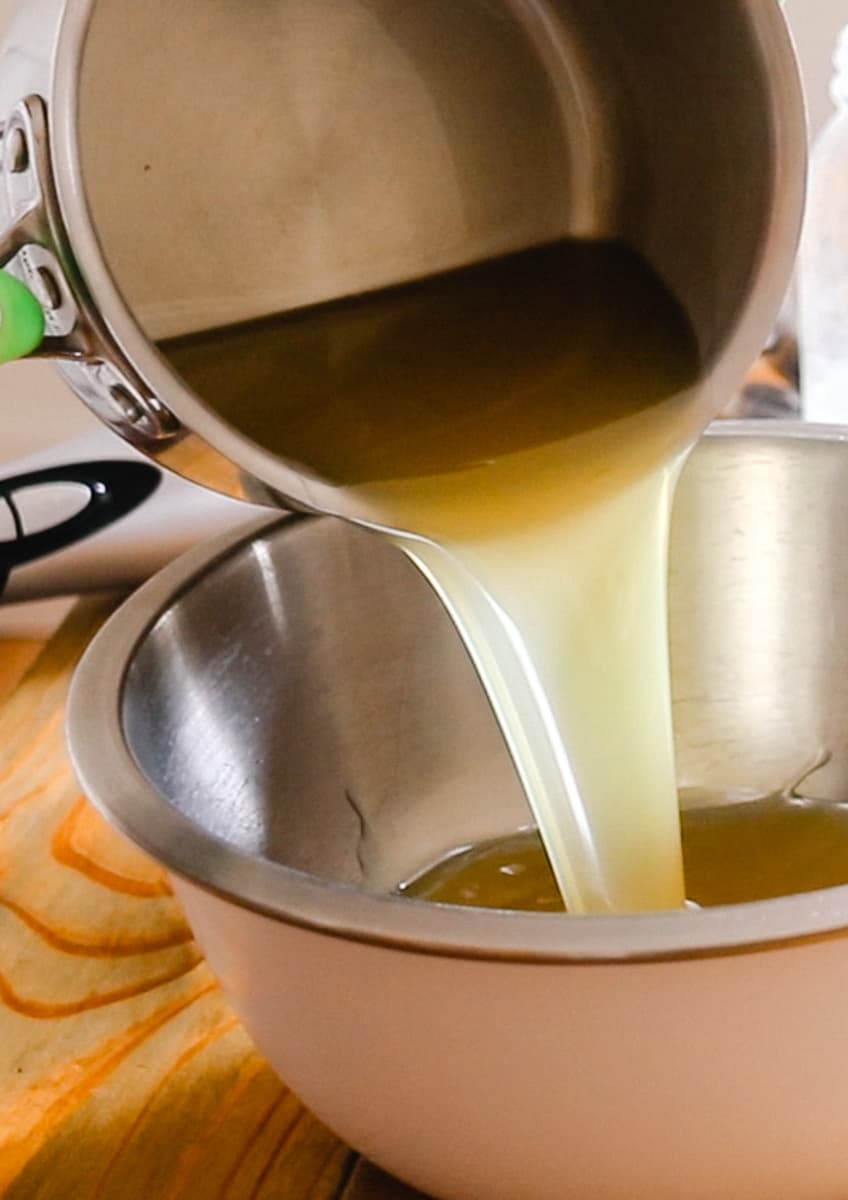
5. Once the shea butter and fractionated coconut oil are melted, you’ll want to let it cool down to about 100°F. The same goes for the lye water – wait for it to cool down. You may need to wait a little longer for one or the other to cool, and that’s OK.
6. Now, using a large mixing bowl with tall sides (to prevent splashing), add the melted oils, then the lye water, and mix with an immersion blender until it comes to a light trace. About one minute is usually enough.

7. Add your orange essential oil, and continue to mix with the immersion blender until a medium trace—about thirty seconds or so.
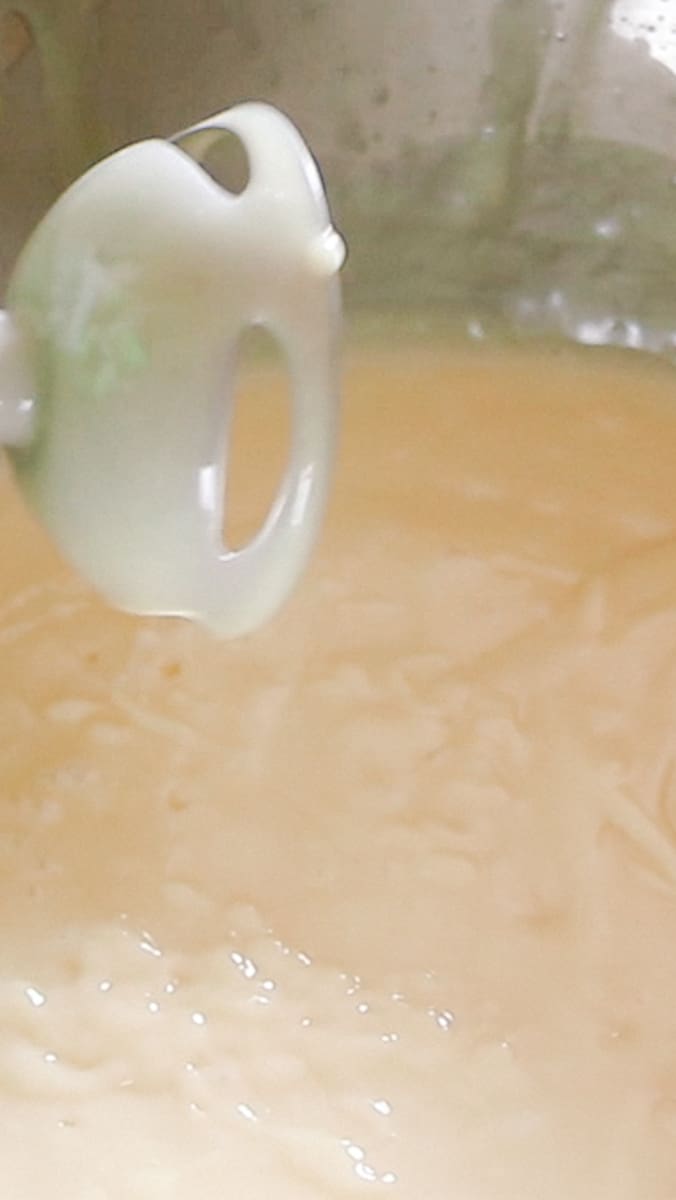
8. Pour the soap into your prepared soap molds and allow them to harden for 24 hours or up to 3 days before removing them from the molds.
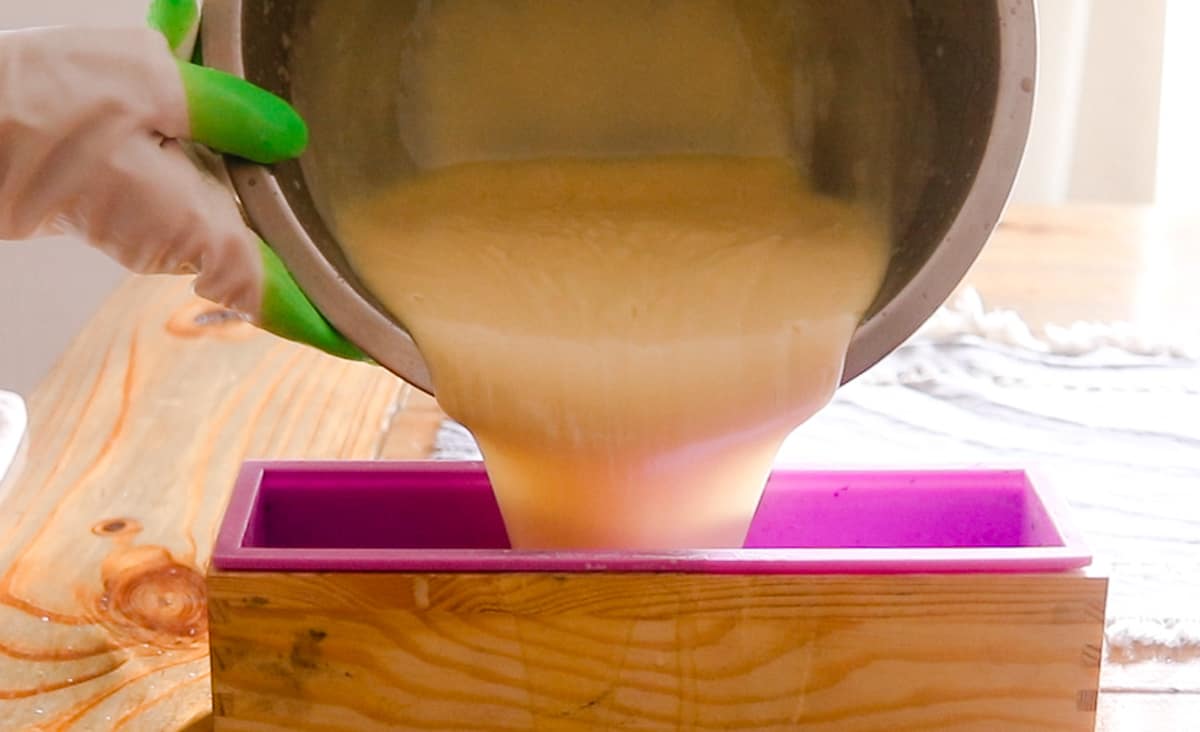
8. Lay the bars on their ends about an inch apart, and allow them to cure for five weeks before using.
If you use a rectangular loaf soap mold, you will need to cut the soap into bars after it hardens, then lay them on their ends to cure. My soap mold made 10 soap bars.
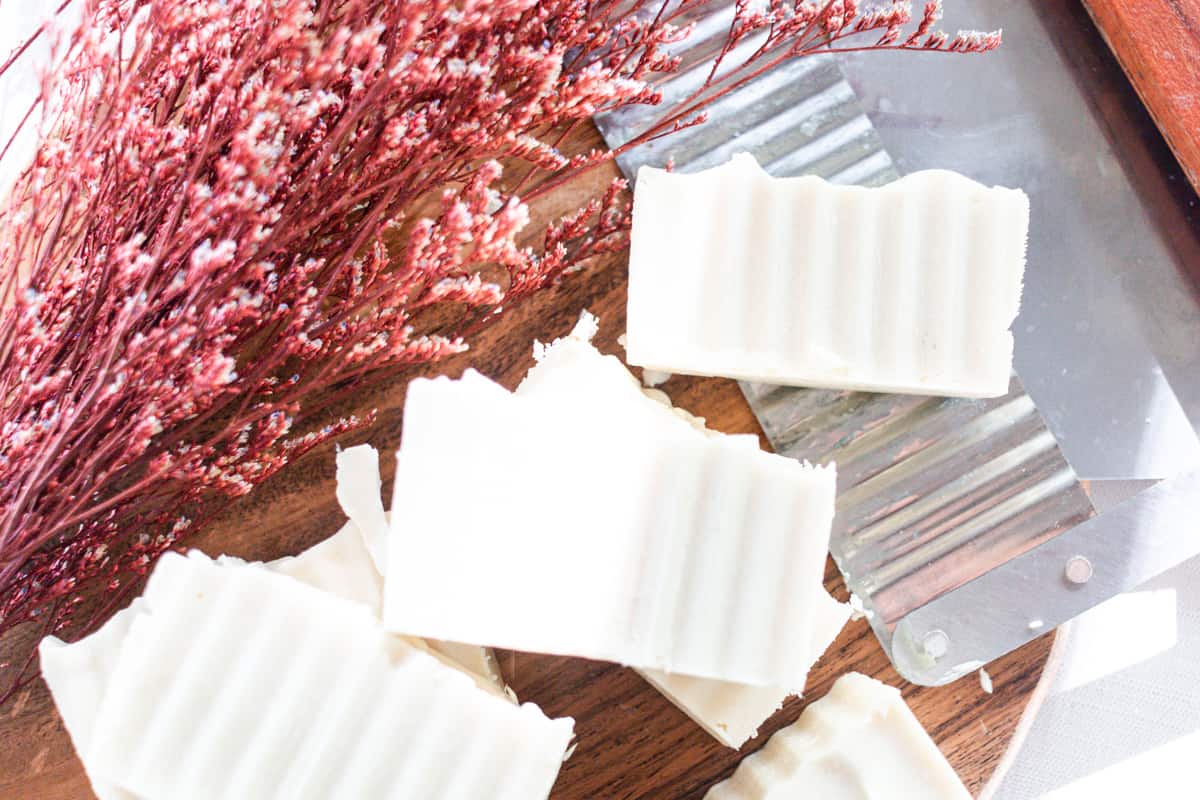
Tips & Safety
- Always use separate soap-making bowls and spoons for mixing etc., rather than borrowing bowls and other items from your kitchen. It’s worth investing in proper soap-making equipment if you can, mainly for the safety factor (working with lye can be dangerous) and also to avoid cross-contamination with the foods you eat.
- Always use a measuring scale rather than cups when working with soap ingredients. Trust me, even a slight ingredient variance (I mean ingredient weight) will mess up the soap. All ingredients need to be measured correctly and precisely.
- Lye can cause severe burns: Wear appropriate safety gear when making soap. I advocate a safety apron, goggles, gloves, and a mask, and always open a window, or better, work with the soap ingredients outdoors so you don’t build fumes up.
- If you’re wondering how to cure soap, it’s all down to patience! Ensure you position the soap bars on their sides with good airflow around them and wait for at least five weeks. The wait time is necessary to allow excess water to evaporate from the soap and ensure it’s hard before use.
FAQs
Can I make substitutions for the ingredients I have on hand? Substitutions can be made but will need to be recalculated using a soap calculator.
Can I use regular coconut oil rather than fractionated coconut oil? Yes, though, you still will need to recalculate the measurements.
Do I have to use essential oils? No! In fact, shea butter makes a beautiful-smelling soap bar.
Why is the orange smell so faint? I was aiming for a very mild fragrance with the orange essential oil. For a more potent fragrance, add up to 40 drops of orange.
How do I check the soap trace? You can check for medium trace by holding the blender above the soap and letting it drip. If the drips leave traces on top of the soap, you have reached a medium trace.
This is essentially ensuring the lye water has emulsified with the oils, and the mixture is an even color with no cloudiness or pools of oil.
Can I use this soap bar to make a liquid soap? Yes! I have a soap recipe using this bar for making liquid soap. You can find the recipe here.

I hope you love making this simple shea butter soap. If you made it and loved it, I would love for you to leave a review below!
And if you enjoy making your own soap bars, consider one of these next!
- How to make melt and pour soap
- How to make swirl soap
- Easy activated charcoal soap recipe
- Clear glycerin soap bars
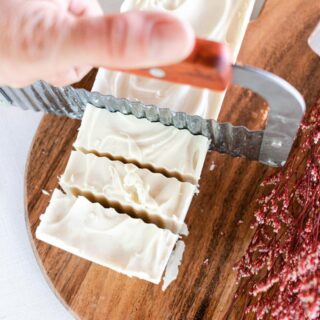
Shea Butter Soap Recipe
Equipment
- Bowls
Ingredients
- 12 oz Shea butter
- 4 oz Fractionated coconut oil
- 5.34 oz Water
- 2.39 oz Lye
- 25 drops Orange essential oil optional
Instructions
- Working in a well-ventilated area and wearing proper safety gear, add the water to a jar or container that can handle high heat.
- Carefully and slowly add the lye to the water, then gently stir it until dissolved. Note the liquid will shoot up over 200°, so using a container that can handle the rapid increase in temperature is vital!
- Set the lye water aside to cool while you do the next step.
- Melt the shea butter and fractionated coconut oil in a small saucepan over medium-low heat. You can also use a double boiler. However, I’ve found it works just as well using a saucepan while stirring frequently.
- Once the shea butter and coconut oil are melted, you'll want to let it cool down to about 100°F. The same goes for the lye water – wait for it to cool down. You may need to wait a little longer for one or the other to cool, and that’s OK.
- Now, using a large mixing bowl with tall sides (to prevent splashing), add the melted oils, then the lye water, and mix with an immersion blender until it comes to a light trace. About one minute is usually enough.
- Add your orange essential oil, and continue to mix with the immersion blender until a medium trace—about thirty seconds or so.
- Pour the soap into your prepared soap molds and allow them to harden for 24 hours or up to 3 days before removing them from the molds.
- Lay the bars on their ends about an inch apart, and allow them to cure for five weeks before using.
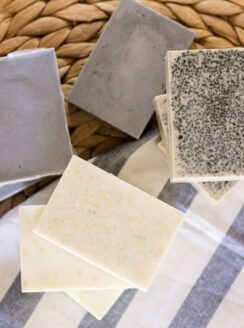
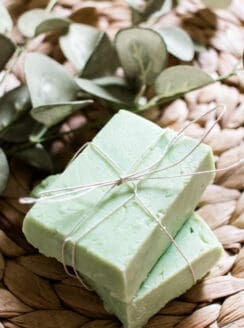
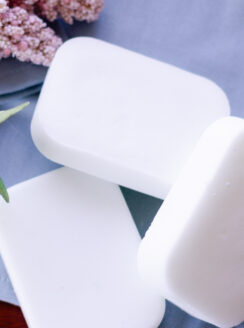
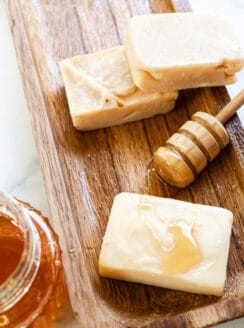
Victoria says
Do I need to worry about the super fat level if I recalculate using regular coconut oil.?
I’m new to all this
Thanks
Laura says
Be sure to recalculate using a soap calculator if any substitutions are made.
Clare says
Question-
I want to try one of your lye soap recipes…I want the easiest recipe first…is this the easiest or can you recommend another one that’s a good beginner recipe?
Thanks!
Have a Blessed day
Laura says
This is a great one to start with, the very first cold-process bar I made was my cold-process chamomile soap recipe. You can find that one on my blog too!
Clare says
Thank you!